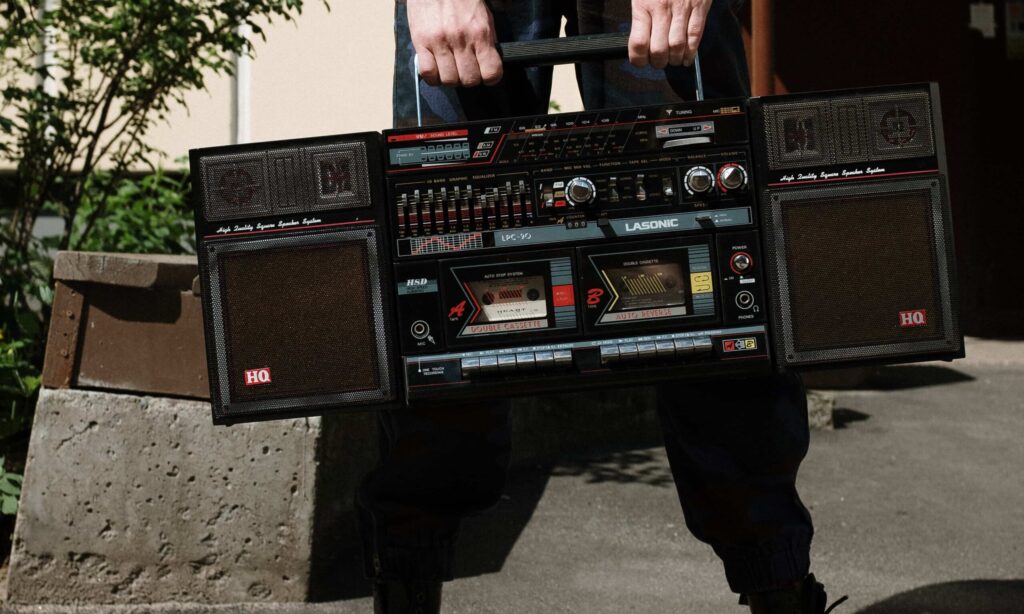|
Getting your Trinity Audio player ready...
|

Audio ads are no longer limited to radio broadcasts.
Audio advertising has become a major force in modern marketing. Audio advertising has become an effective tool for engaging audiences, whether it’s via podcasts, audio advertisements in apps, or even good old-fashioned broadcast radio. It’s a great tool for marketers because it increases audience attention. If done correctly, it could have a lasting impact.
According to a recent study commissioned by Acast and Spotify, digital audio advertising has a 60% higher ROI than other media channels.
In this guide, we will explore the nuances of radio advertising to determine if it is right for you.
Can you hear me? A quick intro to audio advertising
Start with a formal description: Audio advertising strategically uses auditory elements to communicate messages, promote products, and establish brand recognition.
In an age dominated by digital platforms and podcasts, audio ads are now available on streaming services, voice-activated devices, and podcasts. Many marketers are turning to audio ads to reach their audience. According to Edison Research, 74 percent (of adults aged 25-54) listen to digital audio content monthly.
Your audience is listening somewhere.
Audio advertising comes in many forms.
Let’s look at four areas where audio ads are likely to be found.
- Radio commercials are a tried-and-true form of advertising. They can range from 15-second clips to 60-second spots that provide more detail. You’ve heard them all. They often use catchy songs or jingles to grab your attention.
- Podcast advertising: Although newer, they are now well established and offer a great way to reach niche audiences. Advertisements can be presented by the podcast host (especially if they’ve built up trust with their audience), as pre-recorded sections, or even added based on listener preference.
- Audio promotion via streaming platforms: Platforms like Spotify and Pandora allow brands to target audio ads during music or podcast sessions. This allows them to reach users immersed in their chosen content.
- Voice search ads are not always at the top of the list. However, with the proliferation and use of voice-activated technology, advertisers can adapt their content to the user’s query, optimizing for voice search platforms.
Shop Now
Why you should consider audio advertising
Audio ads can be used for various reasons, but the most compelling is that they engage listeners when they are already listening to their content. Even though sounds are not visual, they can create vivid images in listeners’ minds. This is what drives engagement.
Audio content is also less intrusive, allowing users to listen to it while doing other things. This makes audio content a great way to reach busy people. The fact that they are listening to a podcast or radio program has already segmented them for you. However, many platforms offer sophisticated targeting tools so your ads can be targeted to specific demographics, geographic locations, and interests.
If you are in a great position and can get a famous host (or an actor) to read your ad, you can create a real connection of trust that will enhance the authenticity of your brand.
Acast’s research found that “64 percent of listeners pay full attention to podcasts” and that an even greater number agree that podcast ads (in particular) stand out compared to radio.
Here’s what you need to know
How can you use sound to tell the story of your brand?
The first step is to create a story that will draw the listener into the world of the advertisement, creating emotions and memorable experiences. The right script and the perfect voice actor will help you achieve this. Then, think about the sound design, whether music, jingles, or sound effects.
You have limited time, but your audience is paying attention. You would use the same targeting principles for any modern form of marketing. By segmenting your audience strategically and using analytics and tracking to monitor ad performances, you will ensure you are measuring metrics like reach, engagement rates, and return on investment.
The cost of your ad can vary depending on the format you choose. Host-read endorsements may command a higher rate than standard pre-recorded advertisements. You also have to consider that the cost of an ad will fluctuate depending on the popularity of the platform and its reach. Finally, you should consider the advertisement’s quality – the amount of money you invested in the actor and script, as well as studio expertise.
Wired for Sound
Digital audio is real. Advertising spending on this channel will reach $4.9 Billion by 2021 and is growing faster than other online channels. Businesses are investing. It is an important tool for connecting with audiences in the ever-changing marketing landscape.
Brands can establish long-lasting relationships with their consumers by understanding the intricacies and nuances of the different platforms and mastering the art and craft of creating compelling audio stories. Let your voice be heard by embracing audio advertising.
Related



